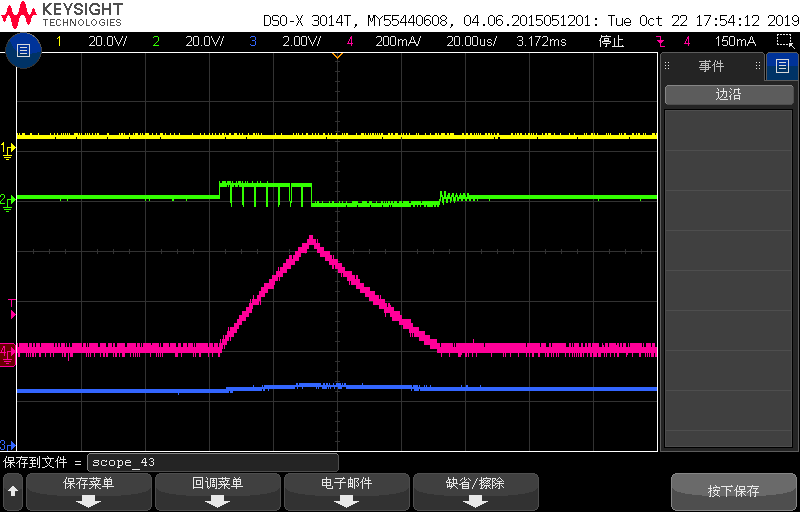Hi, TI power expert,
An issue of LM5007 need support:
Almost the end of the turn off process, unwanted inductance current waveform is observed. Want to know the reason.
The test circuit is showed as below.
Input power is 36V DC, using voltage probe to test VM, SW and output 5V signal, using current probe to test current flow through inductance L9.
Almost the end of the turn off process, the inductance current will rise suddenly as follow pictures show, could you help explain the reason.
Thanks and Best Regards,
Jayce Luo












